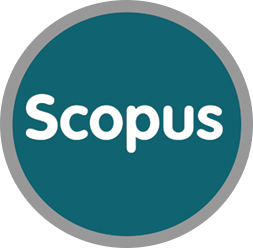Синтез та характеристики TiO2, допованого йонами нітрогену та цирконію, для застосування у фотокаталізі
DOI: https://doi.org/10.15407/hftp07.04.453
Анотація
Ключові слова
Посилання
1. Fujishima A., Honda K. Electrochemical photolysis of water at a semiconductor electrode. Nature. 1972. 238: 37. https://doi.org/10.1038/238037a0
2. Czoska A.M., Livraghi S., Chiesa M., Giamello E., Agnoli S., Granozzi G., Finazzi E., Di Valentin C., Pacchioni G. The nature of defects in Fluorine-doped TiO2. J. Phys. Chem. C. 2008. 112(24): 8951. https://doi.org/10.1021/jp8004184
3. Linnik O., Kisch H. On the mechanism of nitrogen fixation at nanostructured iron titanate films. Photochem. Photobiol. Sci. 2006. 5: 938. https://doi.org/10.1039/b608396j
4. Asahi R., Morikawa T., Ohwaki T. Visible-light photocatalysis in nitrogen-doped titanium dioxide. Science. 2001. 293(5528): 269. https://doi.org/10.1126/science.1061051
5. IrieH., WatanabeY., HashimotoK. Nitrogen-concentration dependence on photocatalyticactivity of TiO2-xNx powders. J. Phys. Chem. B. 2003. 107(23): 5483. https://doi.org/10.1021/jp030133h
6. Serpone N. Is the band gap of pristine TiO2 narrowed by anion- andcation-doping of titanium dioxide in second-generation photocatalysts. J. Phys. Chem. B. 2006. 110(48): 24287. https://doi.org/10.1021/jp065659r
7. Yin S., Ihara K., Aita Y.M., Sato K.T. Visible-light induced photocatalytic activity of TiO2−xAy (A = N, S) prepared by precipitation route. J. Photochem. Photobiol. A. 2006. 179(1–2): 105. https://doi.org/10.1016/j.jphotochem.2005.08.001
8. Kobayakawa K., Murakami Y., Sato Y. Visible-light active N-doped TiO2 prepared by heating of titanium hydroxide and urea. J. Photochem. Photobiol. A. 2005. 170(2):177. https://doi.org/10.1016/j.jphotochem.2004.07.010
9. Cong Y., Zhang J., Chen F., Anpo M. Synthesis and characterization of nitrogen-doped TiO2 nanophotocatalyst with high visible light activity. J. Phys. Chem. C. 2007. 111(19): 6976. https://doi.org/10.1021/jp0685030
10. Huang D., Liao S., Quan S., Liu L., He Z., Wan J., Zhou W. Synthesis and characterization of visible light responsive N-TiO2 mixed crystal by a modified hydrothermal process. J. Non-Cryst. Solids. 2008. 354(33): 3965. https://doi.org/10.1016/j.jnoncrysol.2008.05.026
11. Beranek R., Kisch H., Beranek R., Kisch H. Tuning the optical and photoelectrochemical properties of surface-modified TiO2. Photochem. Photobiol. Sci. 2008. 7: 40. https://doi.org/10.1039/B711658F
12. Yuan J., Chen M., Shi J., Shangguan W. Preparation and photocatalytic hydrogen evolution of N-doped TiO2 from urea and titanium tetrachloride. Int. J. Hydrogen Energy. 2006. 31(10): 1326. https://doi.org/10.1016/j.ijhydene.2005.11.016
13. Bacsa R., Kiwi J., Ohno T., Albers P., Nadtochenko V. Preparation, testing and characterization of doped TiO2 active in the peroxidation of biomolecules under visible light. J. Phys.Chem. B. 2005. 109(12): 5994 – 6003. https://doi.org/10.1021/jp044979c
14. Di V.C., Finazzi E., Pacchioni G., Selloni A., Livraghi S., Paganini M.C., Giamello E. N-doped TiO2: Theory and experiment. Chem. Phys. 2007. 339(1–3): 44.
15. Emeline A.V., Kuznetsov V.N., Rybchuk V.K., Serpone N. Visible-light-active titania photocatalysts: the case of N-doped TiO2 s-properties and some fundamental issues. Int. J. Photoenergy. 2008. 2008: Article ID 258394.
16. Shestopal N., Linnik O., Smirnova N. Influence of metal and non-metal ions doping on the structural and photocatalytic properties of titania films. Him. Fiz. Tehnol. Poverhni. 2015. 6(2): 203. https://doi.org/10.15407/hftp06.02.203
17. Fujishima A., Rao T.N., Tryk D.A. Titanium dioxide photocatalysis. J. Photochem. Photobiol. C. 2000. 1(1): 1. https://doi.org/10.1016/S1389-5567(00)00002-2
18. Ristoscu C., Mihailescu I.N. Biomimetic Coatings by pulsed laser deposition, chapter 7. In: «Laser Technology in Biomimetics». Basics and Applications, Series: Biological and Medical Physics, biomedical Engineering. (Springer-Verlag Heidelberg, New York, Dordrecht, London, 2013). P. 163.
19. Mihailescu I.N., Ristoscu C., Bigi A., Mayer I. Advanced biomimetic implants based on nanostructured coatings synthesized by pulsed laser technologies, Chapter 10. In «Laser-Surface Interactions for New Materials Production Tailoring Structure and Properties». Series: Springer Series in Materials Science. V. 130. 2010. P. 235.
20. Mihailescu I.N., Gyorgy E. Pulsed Laser Deposition: An Overview. In: International Trends in Optics and Photonics. (Heidelberg: Springer, 1999). https://doi.org/10.1007/978-3-540-48886-6_13
21. Linnik O., Shestopal N., Smirnova N., Eremenko A., Korduban O., Kandyba V., Kryshchuk T., Socol G., Stefan N., Popescu-Pelin G., Ristoscu C., Mihailescu I.N. Correlation between electronic structure and photocatalytic properties of non-metal doped TiO2/ZrO2 thin films obtained by pulsed laser deposition method. Vacuum. 2015.114: 166.
22. Gnatuk Yu., Smirnova N., Korduban O., Eremenko A. Effect of zirconium incorporation onthe stabilization of TiO2 mesoporous structure. Surf. Interface Anal. 2010. 42(6–7): 1276. https://doi.org/10.1002/sia.3494
23. Smirnova N., Gnatyuk Yu., Eremenko A., Kolbasov G., Vorobetz V., Kolbasova I., Linyucheva O. Photoelectrochemical characterization and photocatalytic properties of mesoporous TiO2/ZrO2 films. Int. J. Photoenergy. 2006. Article ID 85469: 1.
24. Yang J., Bai H., Jiang Q., Lian J. Visible-light photocatalysis in nitrogen-carbon-doped TiO2 films obtained by heating TiO2 gel-film in an ionized N2 gas. Thin Solid Films. 2008. 516(8): 1736. https://doi.org/10.1016/j.tsf.2007.05.034
25. Kisch H., Sakthivel S., Janczarek M., Mitoraj D. A low-band gap, nitrogen-modified titania visible-light photocatalyst. J. Phys. Chem. C. 2007. 111(30): 11445. https://doi.org/10.1021/jp066457y
26. Wang C.T., Wang, Lin J.C. Surface nature of nanoparticle zinc-titanium oxide aerogel catalysts. Appl. Surf. Sci. 2008. 254(15): 4500. https://doi.org/10.1016/j.apsusc.2008.01.024
27. Alam M.J., Cameron D.C. Preparation and characterisation of TiO2 thin films by sol-gel method. J. Sol-Gel Sci. Technol. 2002. 25(2): 137. https://doi.org/10.1023/A:1019912312654
28. Linnik O., Petrik I., Smirnova N., Kandyba V., Korduban O., Eremenko A., Socol G., Stefan N., Ristoscu C., Mihailescu I.N., Sutan C., Malinovski V., Djokic V., Janakovic D. TiO2/ZrO2 thin films synthesized by PLD in low pressure N-, C- and/or O-containing gases: structural, optical and photocatalytic properties. Digest Journal of Nanomaterials and Biostructures. 2012. 7(3): 1343.
29. Mitoraj D., Kisch H. On the mechanism of urea-induced titania modification. Chemistry. 2010. 16(1): 261. https://doi.org/10.1002/chem.200901646
30. Chen H., Nambu A., Wen W., Graciani J., Zhong Z., Hanson J.C., Fujita E., Rodriguez J.A. Reaction of NH3 with Titania: N-doping of the oxide and TiN formation. J. Phys. Chem. C. 2007. 111(3): 1366. https://doi.org/10.1021/jp066137e
31. Gnatyuk Yu., Smirnova N., Eremenko A., Ilyinl V. Design and photocatalytic activity of mesoporous TiO2/ZrO2 thin films. Adsorp. Sci. Technol. 2005. 23(6): 4978. https://doi.org/10.1260/026361705774859893
32. DiValentin C., Pacchioni G., Livraghi S.A.S., Giamello E. Characterization of paramagnetic species in N-doped TiO2 powders by EPR spectroscopy and DFT calculations. J. Phys. Chem. B. 2005. 109(23):11414. https://doi.org/10.1021/jp051756t
DOI: https://doi.org/10.15407/hftp07.04.453
Copyright (©) 2016 O. P. Linnik


This work is licensed under a Creative Commons Attribution 4.0 International License.



